Portraits from Bill, Drawing Academy student
Dear Drawing Academy tutors,
Somehow your words “draw what you know, not what you see” just didn’t click with me.
While drawing portraits today, I began to realize that it is not only drawing what you know, but feeling the curves that round the face, the eyes, lids, nose, lips, etc.
I have never drawn this way before. In the past, by luck, some of my portraits came out good. However, I now realize that this is a much better way to draw.

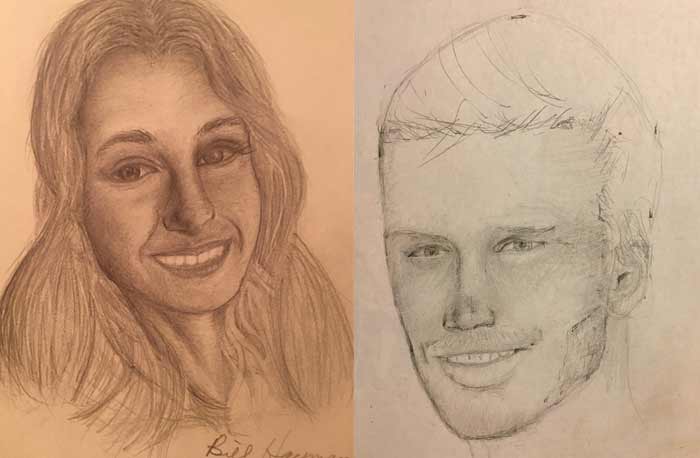
Regards,
Bill
Dear Bill,
Many thanks for your email and drawing.
“Drawing what you know” means applying the knowledge of a human head anatomy, construction and proportions. And when the knowledge is missing, how do you expect to draw things realistically?
So far, you are copying what you see, curves and outlines, in the hope that a portrait would come out realistic.
There is nothing wrong in trying to draw accurate and correct curves in portrait. This is the way to go. But the quality of curves doesn’t depend on how well you can copy them from photos or life.
The main challenge is that you do not see what you don’t know.
Correctness of lines comes with understanding of WHY those curves are there and WHAT makes them to be that way.
These “WHY” and “WHAT” is something you cannot see because it is hidden under the skin surface – anatomy and construction.
Here is just one example of what “drawing what you know” means when it comes to your artwork.
An ear in your drawing does not look believable. This is because you copied it from observation without the knowledge of its construction and anatomy.
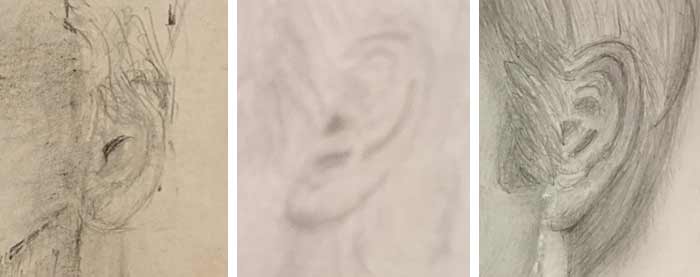
Here’s a quick test for you. Without looking at an ear, can you tell:
– What is the ratio of ear’s width to its height?
– How many times the lobule fits in the ear’s height?
– What is bigger – lobule or concha?
– What is higher – tragus or antitragus?
– Which arm of the crura of antihelix connects to the head and which to the helix?
There are about 20 more questions, but I think you already got what I wanted to say.
If you don’t know the ear construction and proportions, how would you draw it realistically?
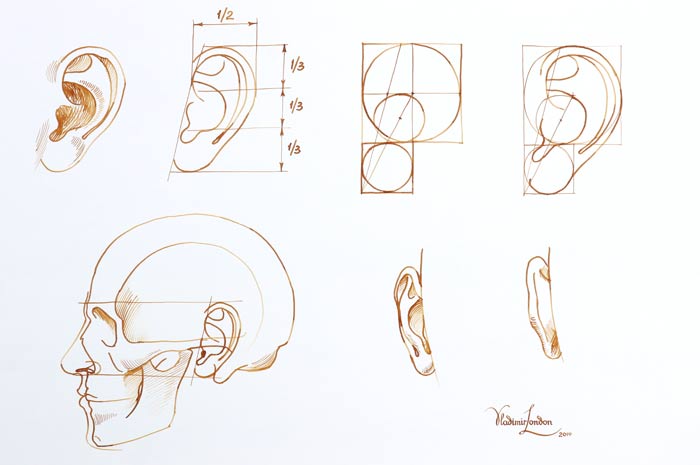
Artwork by Vladimir London
Drawing from observation, which is copying what you see, doesn’t work simply because you do not see things you don’t have the knowledge about. I just demonstrated this with 5 questions above.
You have seen human ears every day of your life. How much did it help you in portrait drawing? Not a lot.
However, should you spend just 30 minutes learning the ear’s proportions, construction and anatomy, and then practice drawing it from life, applying the knowledge you’ve learned, such skills will stay with you for the rest of your life.
With the necessary knowledge, you will be able to draw an ear correctly regardless whether you draw it from life, memory, or from a photo.
The ear here is just an example. The same applies to every part of a human body.
There are many other doubtful areas in your portrait drawing – the shape of a skull, symmetry of the face, alignments and volumes of facial features, etc.
I can’t stress enough that to be a good portrait artist, you have to learn a human head construction, proportions and anatomy.
I hope this clarifies why drawing accurate curves is not enough to achieve realistic portraits.
Start with the foundation of portrait drawing – learn anatomy of a human skull, its proportions and bones. Continue with the main muscles of a face, learn how they influence the shape and help to display emotions. Study the geometry and anatomy of facial features – eyes, nose, mouth, ears. Learn how to apply constructive drawing principles – symmetry, alignments, angles, proportions, perspective. Draw from life using the knowledge you learned.
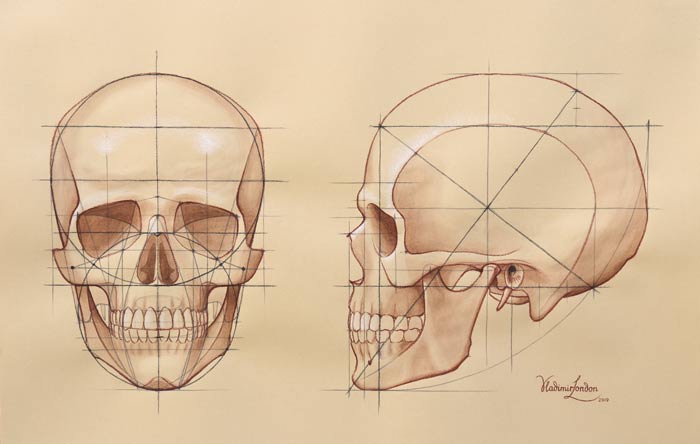
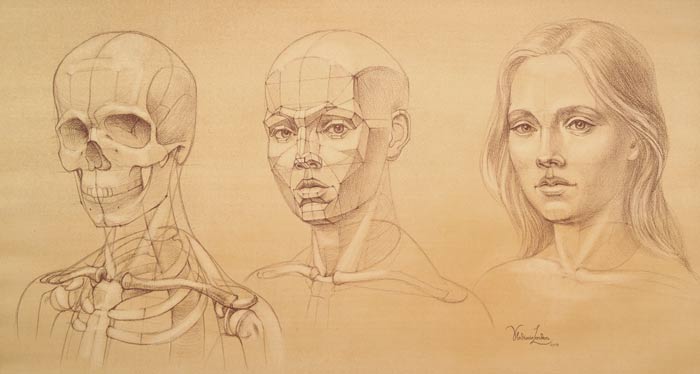
Artworks by Vladimir London
There is no one quick “magic trick” that would raise your portrait drawing to a professional level. With knowledge, time and practice, many things will come on autopilot. For example, you will draw a nose not just how you see it, but with the knowledge of what cartilages shape it. This will add extra “truthfulness” to your portrait artworks. This is what separates a professional artist from an amateur copier.
I think you know what you should do now. Get the knowledge and start “drawing what you know.”
I wish you all creative success you deserve.
Kind regards,
Vladimir London





I agree with Bill on the expressive personal lines required for any likeness of a real (as opposed to imaginary) person. I also agree with the need for understanding of underlying structures because they inform construction of the shapes and shadows that you see, improving your understanding and ability to express what you see and feel. My eye and hand are good, but being able to apply the proportional constructions has helped to improve my portrait sketches.
Also, Bill, capturing the personality of a subject snd feeling the lines that make them them is one of the most pleasurable aspects of drawing people, in my humble opinion, and it looks like you achieved that despite ear inaccuracies.